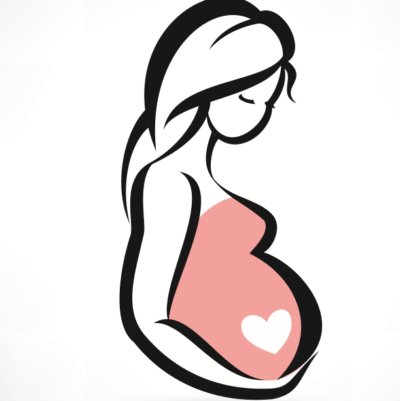Ten Skin Problems Of Pregnancy

Pregnancy brings with it many changes, emotionally, physically, and mentally. From a mental and emotional standpoint, you’re preparing to adopt a new role of parent, with all its accompanying responsibilities. Physically, of course, you’re dealing with changes in the shape, function, and movement of your body. While we have a society-wide belief that pregnant women are always glowing, that, unfortunately, is not always the case. Nowhere is this more evident than in the skin problems of pregnancy.
You’ve probably heard the phrase, “the eyes are the window to the soul”. If this is true, your skin is the window to your current state of health and the changes taking place on the inside. During pregnancy, aside from all the other issues, you may also have to deal with a variety of skin changes, including rashes, acne, stretch marks, breaking nails, hair growth or loss, and dark blotches on the skin.
Most of these changes are directly linked to the enormous amount of hormonal fluctuations women experience during pregnancy. During pregnancy, there are all kinds of changes that can have an impact on your skin, leading to new skin problems or worsening of existing ones. In some cases, pregnancy may actually help improve existing skin conditions. Let’s look at various skin conditions in more detail, defining the main ten skin problems of pregnancy.
1) Rashes. Rashes appear due to irritation of the skin. One common pregnancy rash is called pruritic urticarial papules and plaques of pregnancy (PUPPP). This is the most frequently seen condition specific to pregnancy. Women with PUPPP demonstrate a rash that starts on the abdomen and can spread to the breasts, arms, thighs, and buttocks.
2) Acne. Acne is another skin condition that may get better or worse during pregnancy. Acne is, at least in part, driven by hormones, so the hormones of pregnancy can lead to more breakouts for some women, and clearer skin for others.
3) Oily skin. Oily skin is the third skin condition that may arise during pregnancy. This is related to increased levels of androgen, the male sex hormone, which causes an increase in sebum production. The more sebum produced, the oilier the skin. Many women report that their skin and hair become oilier during pregnancy. Most of the time, these issues can be addressed with over-the-counter oil-controlling cleansers and products.
4) Stretch marks. The fourth skin problem of pregnancy, stretch marks arise when the under layers of the skin are stretched, resulting in visible striations on the surface of the skin. Stretch marks can be treated after the fact, but the best treatment is always prevention. Keeping your skin well moisturized, especially on your tummy, breasts, thighs, can help reduce the appearance of stretch marks.
5) Spider angiomas. This is another possible skin problem of pregnancy. Spider angiomas are groups of very tiny blood vessels that gather around a central point and radiate out like the legs of a spider. Pregnant women are likely to develop these on their chest, faces, arms, and sometimes on other places on the body. Most of these spider angiomas clear up after pregnancy.
6) Chloasma. Chloasma also called melasma, or the “mask of pregnancy” is another skin condition that is diagnosed when certain areas of the skin turn darker because of excess pigmentation. Most often, this condition affects places of the skin that are most often exposed to the sun, like the upper lip, forehead, cheeks. This condition is likely to clear up after pregnancy. Again, you can lessen your chances of chloasma by using a good (baby safe) doctor-recommended sunscreen throughout the course of your pregnancy.
7) Too much hair. Changes in the hair are also common during pregnancy. Some women lose a lot of hair within a few months after delivery, while many are troubled with excess hair growth during pregnancy. Excess hair growth is most often seen on the lip and chin and is triggered by an increase in androgen and other male hormones during pregnancy.
8) Brittle nails. Many women experience breaking, splitting, or brittleness to their nails during pregnancy. Physicians aren’t quite sure why this occurs, but it may be managed with an over-the-counter nail hardening polish. Check with your doctor.
9) Skin tags. Skin tags are little pieces of skin that over-grow and hang from the neck. These can increase in number during pregnancy. If you have skin tags before pregnancy, it may be that pregnancy will cause these to increase.
10) Atopic dermatitis. Also known as eczema, this skin condition may appear or worsen during pregnancy. Marked by extreme skin itchiness, too much scratching can lead to the skin becoming red, swollen, or cracked.
If you are pregnant, be sure to watch for these ten skin problems of pregnancy. If you begin to develop any of these conditions, seek appropriate medical advice; you don’t have to suffer through these conditions for the whole nine months. Chances are that your doctor will have recommendations that can address your skin problems so you can have healthy, beautiful skin, even while you’re pregnant.
Suggested Read: Photo Shoot With A Pregnant Woman As A Model






